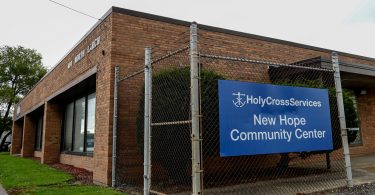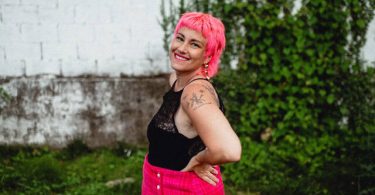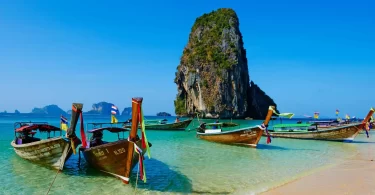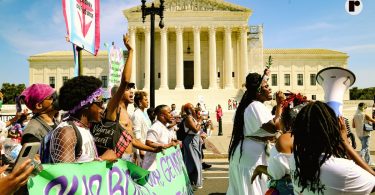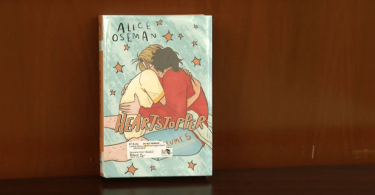Brandon Gruszczynski, who manages the LGBTQ Baltimore Eagle Bar & Nightclub in Mount Vernon, fondly remembers a once-vibrant gay scene in Baltimore.
It was during the ’90s and early 2000s when patrons could hop from bar to bar for hours on any given night or attend other activities, such as house parties, drag bingo or game and trivia nights throughout the week.
But with the closing of a series of gay bars combined with the loss of a strong and prosperous “gayborhood,” Gruszczynski is frustrated and looking for answers.
Former gay bars and venues in Baltimore are now just shells of themselves — if they even exist anymore.
In 2019, Grand Central was sold and sent immediate ripples through Baltimore’s LGBTQ community. The property’s new owners, Landmark Partners, turned the building into office and retail space. Club Hippo, another large gay nightclub located across the street, closed in 2015. A CVS drug store now sits in its space.
G.A.Y. Lounge, which was open for less than a year on Charles Street, closed in October 2017. Its owners opened The Manor in 2019 in the former The Elephant space on Charles Street. The owners turned over operations of the business to two brothers who are not members of the LGBTQ community. And Club Bunns near Lexington Market, which attracted a gay black clientele, closed in 2019 after 30 years in business.
“It’s not just analytics, or statistics. Mount Vernon has died. Grand Central is gone. The Hippo is gone. There are only a few clubs and bars left,” Gruszczynski said. “If you are going to build a community and want them to stay, you have to give them some reason to stay.”
Because of all of this, it came as no surprise to the 33-year-old when he found out the percentage of Maryland’s population that is LGBT is below the national average.
In Maryland, 5.4% of the population is LGBT, while the national average is 5.6% and in nearby Washington, D.C., which has the highest percentage of LGBTQ adults in the country, it is 14.3%, according to a new report from the Williams Institute on Sexual Orientation and Gender Identity Law and Public Policy at the UCLA School of Law. (The report uses the acronym LGBT, not LGBTQ.)
And even though the South has more LGBT adults than any other region of the country, Maryland actually has a lower percentage of people who identify as LGBT, according to the
Brandon Gruszczynski stands for a portrait inside the Baltimore Eagle on Jan. 5, 2024. (Ulysses Muñoz / The Baltimore Banner)
The study, which used data from the 2020-2021 Behavioral Risk Factor Surveillance System, estimates the percentage and number of LGBT adults at the national, state and regional levels.
Gruszczynski is not shocked by Washington, D.C.’s ranking, which he says has a “presence” with vibrant neighborhoods and multiple clubs and bars for socializing.
“You have to build a community. You have to give them [LGBTQ people] a reason to stay. That’s what I’m trying to do — keep the community here,” he said.
Gruszczynski tries to do this with seasonal activities — such as hosting watch parties for “RuPaul’s Drag Race” and bringing in out-of-town DJs and go-go dancers, as well as opening the night before Thanksgiving, which is something he had not done in recent years.
“People are starting to move because it’s cheaper [elsewhere]. Times have changed. COVID killed so much. I think a lot of people are on the same page as me,” he said. “You don’t even have to be a bar owner or manager. What can you do for your community?”
Chanel Janae performs at the Baltimore Eagle on Nov. 22, 2023. (Carolin Harvey / The Baltimore Banner)
Karl Jacobs, a 33-year old nonbinary Mount Vernon resident, was caught off guard by Maryland’s numbers.
“Maryland is often touted as one of the most diverse states in America. I’m not entirely sure why D.C. is so much higher, but there’s always been strong queer neighborhoods in D.C.,” Jacobs said. “Today, it feels like those neighborhoods have lost their queer identity, but D.C. as a whole always presents itself as queer-friendly. I’ve always felt relatively safe there. I personally wonder how much of Maryland’s 5.4% is based here in Baltimore City?”
The study’s findings also did not surprise Jabari Lyles, a Black, queer nonbinary educator, consultant and nonprofit leader who lives in Highlandtown.
“In Maryland, I think we sometimes forget that the total demographic makeup of the entire state looks vastly different than the urban centers in Baltimore and the surrounding counties,” Lyles said. “This, at times, affects our organizing and outreach strategy. While Central Maryland may be more dense with LGBTQ community, many of our community members are isolated in rural, conservative parts of the state, and as a result, are unable to access some of the resources we take for granted in Baltimore. We have to remember that progress for our community in Maryland includes our neighbors in Western Maryland, Southern Maryland and the Eastern Shore.”
Andrew R. Flores, an assistant professor at American University who is also an affiliated scholar at the Williams Institute, said that it is important to recognize that the study’s data does not delve into the state and city percentages. But he theorized that’s because Maryland has to take into account rural, less densely populated areas that could lower the overall LGBT percentages, which tend to be higher in urban areas.
“Keep in mind that D.C. is an urban center without really much of a suburban or rural area,” Flores explained. “Whereas states like Maryland have a mix of urban centers, suburban areas and rural areas. If we focused solely on the cities in Maryland, such as Baltimore, then I’m sure you’d see estimates that are larger than for the entire state of Maryland.”
Flores said the study is a “small snapshot” that hopefully provides evidence that can eventually inform law and policy.
The study considers age, race and ethnicity, educational attainment, and sex, as well as features that differentiate states such as census data on same-sex couples in the state and statewide attitudes about LGBT rights, according to Flores.
“So, all of those factors have some role in why Maryland was slightly lower than the national average,” Flores said.
Traditionally, LGBTQ people have thought to primarily live in larger cities on the East and West coasts. In reality, the study shows that the highest percentage of LGBT people live in the South. Flores explained that the South contains many states with a lot of people.
“Where there are people, there are LGBT people,” Flores said. “It does serve as a good reminder that red states have LGBT adults living there and that state public policies can impact them.”
Ultimately, Flores said that the study could factor into upcoming elections — especially in tight races where cohesive groups can band together and tip the scales.
“I have little data to suggest that LGBT people are less interested in the 2024 election compared to previous elections or that they are souring on the Democratic Party, so, I would expect that 2024 may continue to show what previous elections have shown us — a mobilized and cohesive group that can be consequential, especially when the margin of victory is in single-digit percentage points,” Flores said.
Cleo Manago, director of the Pride Center of Maryland, sits for a portrait outside of the center’s new location. (Ulysses Muñoz / The Baltimore Banner)
At least one critic said there are flaws in the survey.
Cleo Manago, executive director of Pride Center of Maryland, the state’s largest nonprofit organization dedicated to providing resources to the LGBTQ community, questioned the study’s conventional research methodology.
“Sexuality is and has always been more fluid and culturally/experientially diverse than the latest labels or research imposed by usually white systems,” said Manago, a past panelist at the Williams Institute. “Until research cultivates the capacity not to impose white hegemonic biases into the study of human sexuality and sexual fluidity, the published research is more political than accurate. Sexual fluidity and capacity go way beyond reported LGBT percentages and identities. The research tends to be unable to present a precise picture. As a result, I do not trust the research findings. However, they will influence U.S. policy.”
More From The Banner
Baltimore-based author Naomi Winston featured on ‘CBS Mornings’ for her inclusive coloring books
A Baltimorean says he’s the real ‘Bird’ on ‘The Wire.’ David Simon calls it a flight of fancy.
What’s in a name? In the case of Baby Charm, sentiment and the love of a city
How ‘Johnny’ became shorthand for Lamar Jackson’s greatness


